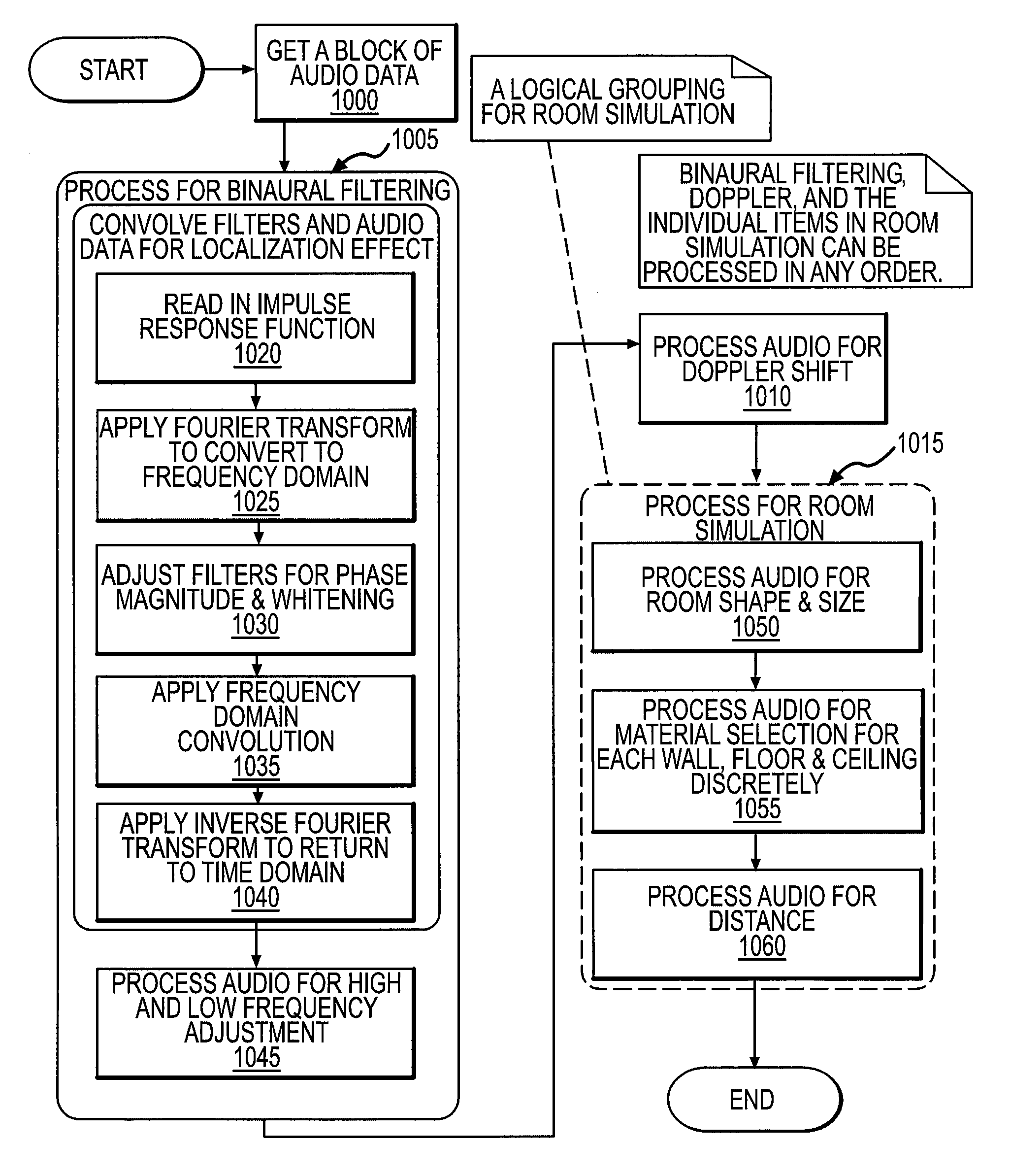Audio spatialization and environment simulation
a spatialization and environment simulation technology, applied in the field of sound engineering, can solve the problems of not being suited to all types of audio, not all audio applications, and requiring relatively expensive audio components to playback, and achieves the effects of more accurate audio spatialization, precise impulse response filtering, and precise transfer function
- Summary
- Abstract
- Description
- Claims
- Application Information
AI Technical Summary
Benefits of technology
Problems solved by technology
Method used
Image
Examples
Embodiment Construction
1. Overview of the Invention
[0040]Generally, one embodiment of the present invention utilizes sound localization technology to place a listener in the center of a virtual sphere or virtual room of any size / shape of stationary and moving sound. This provides the listener with a true-to-life sound experience using as few as two speakers or a pair of headphones. The impression of a virtual sound source at an arbitrary position may be created by processing an audio signal to split it into a left and right ear channel, applying a separate filter to each of the two channels (“binaural filtering”), to create an output stream of processed audio that may be played back through speakers or headphones or stored in a file for later playback.
[0041]In one embodiment of the present invention audio sources are processed to achieve four-dimensional (“4D”) sound localization. 4D processing allows a virtual sound source to be moved along a path in three-dimensional (“3D”) space over a specified time p...
PUM
 Login to View More
Login to View More Abstract
Description
Claims
Application Information
 Login to View More
Login to View More - R&D
- Intellectual Property
- Life Sciences
- Materials
- Tech Scout
- Unparalleled Data Quality
- Higher Quality Content
- 60% Fewer Hallucinations
Browse by: Latest US Patents, China's latest patents, Technical Efficacy Thesaurus, Application Domain, Technology Topic, Popular Technical Reports.
© 2025 PatSnap. All rights reserved.Legal|Privacy policy|Modern Slavery Act Transparency Statement|Sitemap|About US| Contact US: help@patsnap.com



